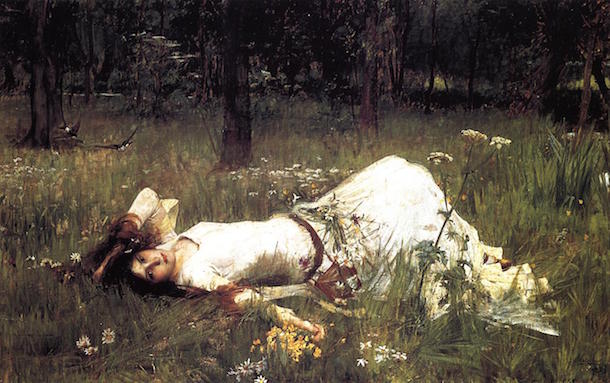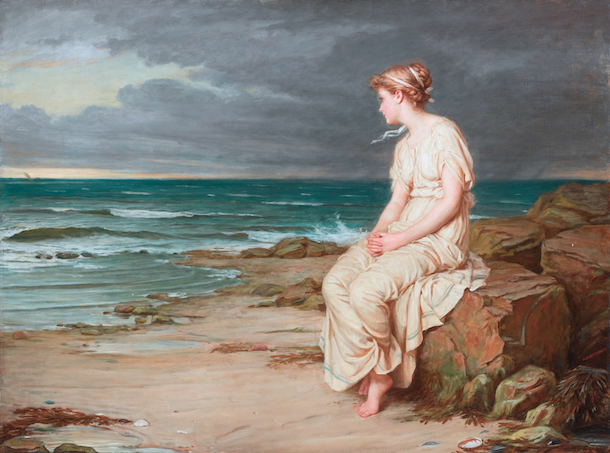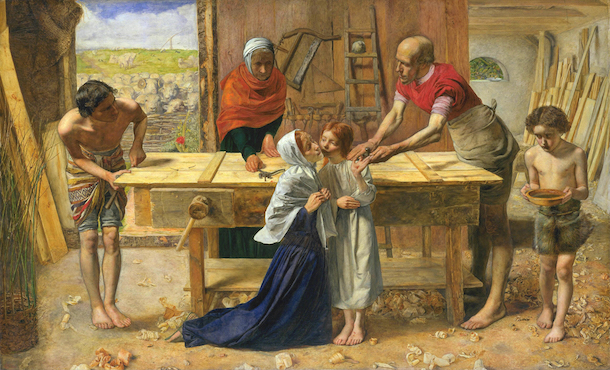Pre-Raphaelites
"Art is not a study of positive reality, it is the seeking for ideal truth."
(John Ruskin)
The Pre-Raphaelites or Pre-Raphaelite Brotherhood was a group of 19th-century Victorian artists founded in 1848 by Dante Gabriel Rossetti, William Holman Hunt and John Everett Millais. The name of the group derives from its members’ aim to reject the mechanistic approach of the Mannerist painters and return to the classical beauty and elegant composition of Raphael’s paintings. The brotherhood sought a return to the abundant details and intense colours of the Renaissance Italian Art. Explore the Pre-Raphaelites by starting from What is the Pre-Raphaelite Brotherhood? Browse our curated list of artworks from the Pre-Raphaelites such as Dante Gabriel Rossetti, William Holman Hunt and others.
History of Pre-Raphaelites
The Pre-Raphaelite Brotherhood
The Pre-Raphaelite Brotherhood was founded in John Millais's parents' house on Gower Street, London in 1848. At the beginning only three painters, Dante Gabriel Rossetti, William Holman Hunt and John Everett Millais, were present at the meeting. Rossetti was a student under Ford Madox Brown, with whom he retained a close relationship throughout his life. Hunt and Millais were attending the Royal Academy of Arts, but they decided to keep the existence of the brotherhood secret from the Academy. By autumn, four more members, painters James Collinson and Frederic George Stephens, poet and critic William Michael Rossetti, and sculptor Thomas Woolner, had joined to form a seven-member-strong brotherhood. From this moment lots of other young artists became close associates and collaborated with the Pre-Raphaelites.

First Exhibition and Magazine
In 1849 there was the first exhibitions of the Pre-Raphaelites. All members of the brotherhood agreed to sign their work with their name and the initials of the Pre-Raphaelite Brotherhood, PRB. Between January and April 1850 the group published a literary magazine, The Germ, edited by William Rossetti which published poetry and essays on art and literature of the associates of the brotherhood. The title of the magazine refers to the Pre-Raphaelite belief in the importance of nature.

The division
In 1850, the Pre-Raphaelite Brotherhood became the subject of controversy because Millais' painting Christ in the House of His Parents was considered to be blasphemous by many reviewers, notably Charles Dickens. Due to this episode, the movement divided into two directions. Dante Gabriel Rossetti became an inspiration for the medieval strand of the movement. Hunt and Millais, by contrast, moved away from direct imitation of medieval art and followed the realist and scientific aspects of the movement. After the 1860 the original PRB had virtually dissolved. Millais abandoned the group. Rossetti changed its style and began painting versions of femme fatales using models like Jane Morris. Hunt continued to emphasise the spiritual significance of art, seeking to reconcile religion and science.
After the Pre-Raphaelites
The movement influenced many later British artists into the 20th century. Rossetti came to be seen as a precursor of the wider European Symbolist movement. In the late 20th century the Brotherhood of Ruralists based its aims on Pre-Raphaelitism, while the Stuckists and the Birmingham Group have also derived inspiration from it.
Text by Cristina Motta
